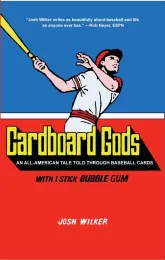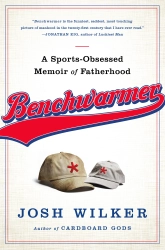
Tom Seaver
September 4, 2020 
I’ve never seen God, but I once saw Buddha.
I was eighteen, and I’d hitchhiked from my grandfather’s house in East Dennis to Hyannis to catch a bus into Boston, to Fenway, where I bought a bleacher seat ticket. It was July 6, 1986, and Tom Seaver, in what would turn out to be his last season, was making his second start as a member of the Boston Red Sox.
It was the first time I ever went to a baseball game by myself. That might be one reason it sticks out among all the other games I’ve ever gone to. It felt like an adult thing to do. It felt solemn and lonely, but also like something that suited me. My childhood at its heart, which is to say at its most joyous, had been about togetherness, both real and imagined—the flickering togetherness between my older brother and me, the brief flashes of togetherness every spring from being on a little league team with other baseball-loving kids, the fabricated togetherness within these baseball cards, a whole universe of heroes surrounding and protecting me—and it was dawning on me that adulthood was going to be defined by a dissolution of togetherness. Maybe a need to hold on to some feeling of togetherness was what drew me to Fenway that day.
***
Last night I dug around for a long time in my chaotic box of baseball cards for one featuring Tom Seaver, who died earlier this week. The cards had once been sorted into teams, and some of this sorting still persists in diminished ways within the chaos, but for a long time I had trouble finding even a single vein of Mets cards. Dust was rising into my eyes, and my back started hurting. The process felt like my past was repelling me, like whatever order I’d been able to impose on my life through my baseball cards has dissolved. I started to feel exhausted by it all. But finally I found this card, a 1975 team checklist with uneven edges. I believe I scissored this card, and some other 1975 team checklists, out from the back of a box of cereal. I’m not sure anymore if that’s true. Details like this used to be so clear to me that they became a kind of orthodoxy at the center of my ad hoc spiritual orientation: the clarity of my memories was my morality, my sense of what was true and what was false. This was an extension of my vow as a child to remember everything about my childhood when I was older, so that I wouldn’t be an adult who didn’t understand childhood, or an adult who was disconnected from the truest self, the one that manifested in childhood. But my memories are dissolving, becoming increasingly less reliable. If they retain any substance at all that substance is akin to water-color paint, no more than something to use to make a diaphanous illusion, and then to use again to make a different illusion.
I’m glad, in the end, that I ended up with this card. It’s not like the Seaver cards I have, or think I have, where he’s either in the middle of his beautiful, powerful delivery or in a posed shot, glowering out at the viewer with the face of one of the sport’s most determined competitors. He’s not the star of the card. But he can be clearly seen, second row, third from right, and he’s smiling. He’s happy. This is the team that he came to define more than any player has ever defined any team. He’s together with them. A massive collection of players, it should be noted, far more than the number of players that would be on the active major league roster, as if the card’s other world-famous man, the one with the benevolently homely mug shown both in the inset and three figures to Seaver’s right, didn’t have the heart to dim anybody’s dreams of playing in the major leagues, and so for this moment there’s room for everybody, and this is OK with Tom Seaver, a pillar of winning and togetherness, and the seven-year-old holding this uneven card in his fingers got to bask in this togetherness that manifests with no other team more than this one, in the franchise for whom Tom Seaver earned one of his nicknames, The Franchise. As my friend Pete, a lifelong Mets fan, put it, when talking about Seaver’s death and more specifically about all the condolence calls he was fielding from friends about it: “It’s like a death in the extended family. And what are the Mets but one very big, very dysfunctional family?”
***
I might have grown up a Mets fan had my family stayed in New Jersey, where I was born, but we moved to Vermont just before baseball entered my life, the year before I got this 1975 card, and I fell in love with that state’s favorite team, the Boston Red Sox. But the Mets always remained like an extended family member to me, especially given that my father, who’d lived with us in New Jersey, moved to New York City when we moved to Vermont, and on our summer visits to see him he took us—begrudgingly, given his distaste for sports—to see the Mets. I never saw Seaver on those first couple of visits, and after June 15, 1977, he was gone, traded away.
So in 1986, when I was meandering through a lonely summer at my grandfather’s house and saw the chance to see him pitch, I grabbed it.
He was matched up that day against a left-handed flamethrower named Mark Langston. I’m not sure how much he gets mentioned these days, but at that time Langston was among the most electrifying young pitching talents in baseball. He had led the league in strikeouts as a rookie in 1984, and after an injury-shortened season in 1985 was on his way to leading the league in strikeouts again, and in starting a string of four years in a row in which he topped 200 strikeouts, an astonishing feat of power and consistency except when brought up in comparison to the pitcher he was facing that day, Tom Seaver, who had done it nine years in a row (and came within four strikeouts in 1977 of doing it eleven years in a row).
I remember the game as a pitching duel between the canny, aging legend and the flame-throwing youngster. The final result, a 7-4 victory for the Red Sox, casts some shade on that memory, but a closer look at how things unfolded backs up my memory. Seaver held the Mariners scoreless for the first five innings, and Langston, after yielding a run in the first, was even better, recording fourteen outs in a row against the best team in the American League. In the bottom of the sixth, after the Mariners had tied the score at 1-1, Langston had a failure of concentration, surrendering a leadoff walk, and two batters later he compounded his self-made problems by bungling a sacrifice bunt attempt, which allowed the Red Sox to load the bases, and in he pressure of this situation—the bases loaded with slugger Jim Rice at bat—the phenom’s focus plummeted further, and he walked the normally free-swinging Rice to force in the go-ahead run. At that point the entropy swirling out from the talented left-hander on the mound spread to his teammates, third baseman Jim Presley muffing an inning-ending opportunity and allowing another run to score. Langston had been expelled from the duel, and though he finished out the game he was no longer linked up with a legend in a moment of grace but merely ordinary, allowing one home run to Tony Armas in the seventh and another to Marc Sullivan in the eighth.
***
One of my two most distinct memories from that game is not anything I can place exactly but is of Seaver at his center, Seaver on the mound. It was, I’m sure, a few innings in but before Langston blinked, when some elements of the game—flashes of threats from the opposing batters, flashes of Langston’s seemingly impenetrable brilliance, flashes of the unbeatable progression of time itself—had manifested as being in opposition to the goals of the 41-year-old man on the mound. None of us are going to last forever. Everything is coming over the mountain to undo us, sooner or later. So what do you do? Seaver, in the moment I hold in my mind as a guide for life, brought the ball and his glove hand together near the center of his body and set himself, and his shoulders rose up and down as he took a deep breath. I was hundreds of feet away but could feel him breathing, could feel it as if it was the whole world breathing. He had, it seems to me, complete possession of the moment. This was a person at the center of a togetherness spreading out beyond the bounds of the field, beyond even the bounds of time. This was Buddha.
Seaver, who said afterward that by the seventh inning he was “very wobbly,” came out for one more frame after his foe had come undone and retired the Mariners in order. The last out was a ground ball to second. From the bleachers I would have been able to see up close that the Red Sox bullpen had started to stir in earnest, and so it would have been clear that the great man was walking off the field for the last time that day. We all rose to our feet and cheered. It would be, as it turned out, the last time Tom Seaver would win a game in front of a home crowd. But what I remember more than standing up and into my new adult solitude with 20,000 others and yelling my throat hoarse was Seaver himself, walking slowly and steadily, neither rushing nor lingering, walking away, inevitably away, from the point at which he’d been, as much as anyone ever has, the center of the universe.





Beautiful. Had the same experience watching Pedro Martinez, in his prime for the BoSox, in Anaheim vs the Angels. In complete control of the entire environment, patient and confident in the knowledge that he had the goods and they were better than the hitters could handle. Every fan knew it too. As fun as it gets in sports to see and feel that.
In a more perfect world, Seaver would have been able to come on in Game 7 of the 86 series, pitching 3 innings, giving up only a scratch single to Rafael Santana, and rode off into the sunset.
Always great to read your work Josh.
The first baseball game I ever saw in person was 1975 in St. Louis. My dad wanted to see Tom Seaver pitch against the Cardinals, and so he took me along. Life was never the same after that day.
If you have a minute, please send me an email. I just got a big box of old 70s cards in the mail today and haven’t opened it yet, Hopefully there’s a Seaver or a Brock or something interesting inside. If you want to join me in going through it, that would be fun.
Writers block?
No, working on a novel.
Excellent, publish or perish as they say.
Where that Mets team card came from: Check the back of that card to see the Topps advertisement for how to order the full 1975 baseball team checklist in a single rolled up cardboard sheet. Either you or maybe someone you traded with would have sent away to Topps for that Mets team card.